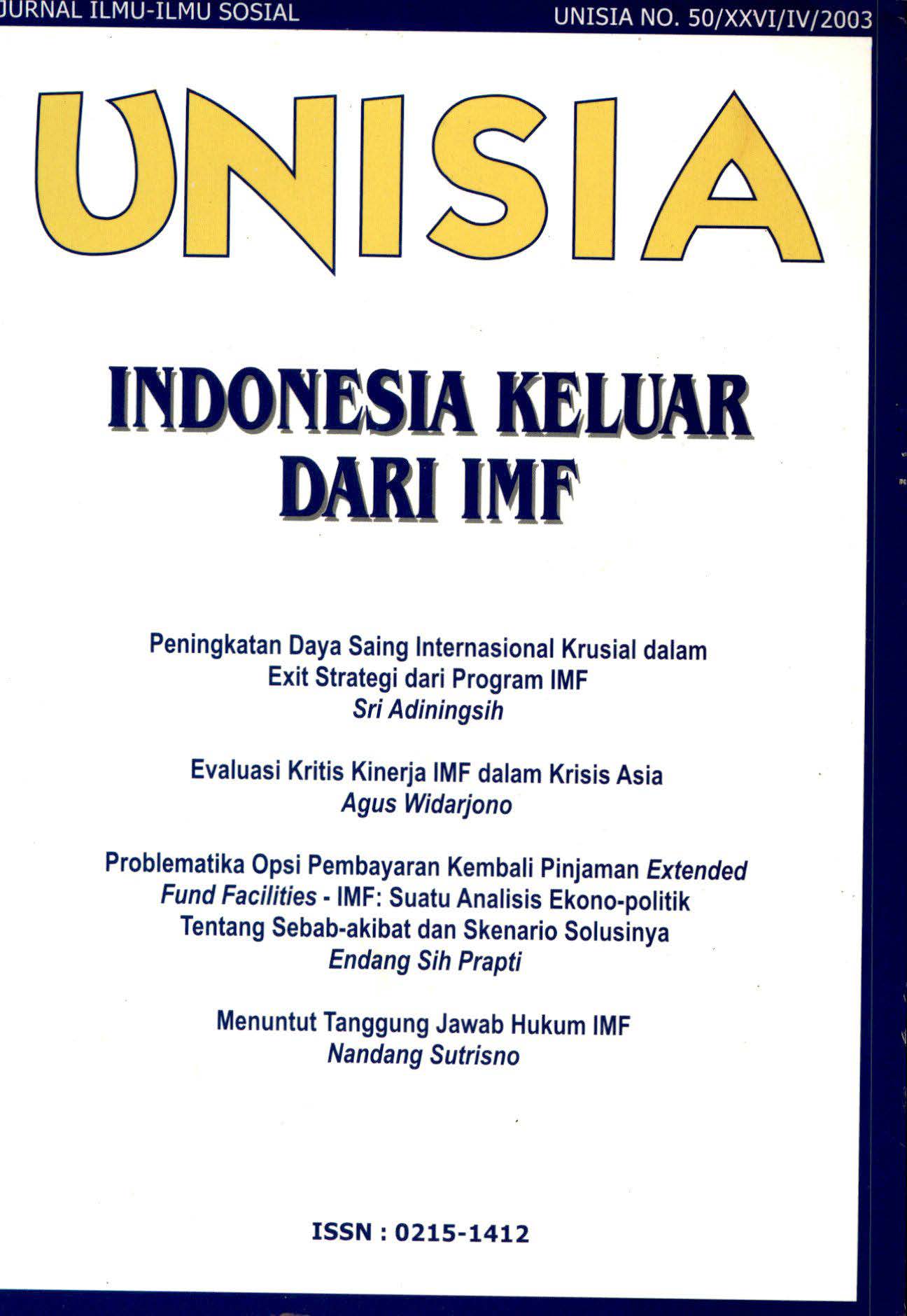Main Article Content
Abstract
The IMF established after World War II is a part of world society's effort to save the world from economic depression. Initially it had well-defined purposes. With the collapse of fixed exchange rate system in 1971, the IMF lost its original purposes. The institution then brings free market ideology. Fiscal Austerity, privatization and market liberalization are the three pillars of Washington Consensus advice to help countries facing economic problem. Washington Consensus, however, was designed originally to respond economic problem in Latin America where those countries have huge deficit and loose monetary policy. It is not surprise that these recipes cannot run well in the case of the East Asia Crisis. Indeed, the IMF's advice worsened the economic crisis of the regions and spread to other regions
Article Details
- Authors retain copyright and grant the journal right of first publication with the work simultaneously licensed under a Creative Commons Attribution License that allows others to share the work with an acknowledgement of the work's authorship and initial publication in this journal.
- Authors are able to enter into separate, additional contractual arrangements for the non-exclusive distribution of the journal's published version of the work (e.g., post it to an institutional repository or publish it in a book), with an acknowledgement of its initial publication in this journal.
- Authors are permitted and encouraged to post their work online (e.g., in institutional repositories or on their website) prior to and during the submission process, as it can lead to productive exchanges, as well as earlier and greater citation of published work.




